Contrasts of Panama City
First impressions of Panama City, Panama, a city of contrast
Two and a half days is not enough time to understand the nature and character of a city, but one does form some first impressions. My first impressions of Panama, outside of the heat and humidity, are of contrast. “City of contrast” is a time-worn travel cliche travel writers are encouraged to avoid, but contrast was the word constantly coming to mind during my short visit. Contrast between old and new, wealthy and poor, development and decay, grandeur and squalor.
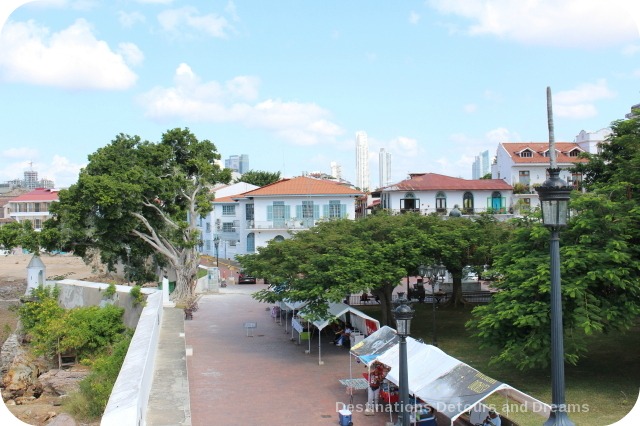
Panama City is an old city, founded by the Spanish in 1519. Its history is evident in Casco Viejo, an area declared a UNESCO World Heritage site in 1997. It has many buildings dating from the seventeenth century and is a lovely area to stroll through. The contrasts of the city are evident here. While standing amid the colonial buildings, skyscrapers are visible across the bay. Tall white structures which look too narrow to stay upright. The skyline seems more like Miami than Central America.
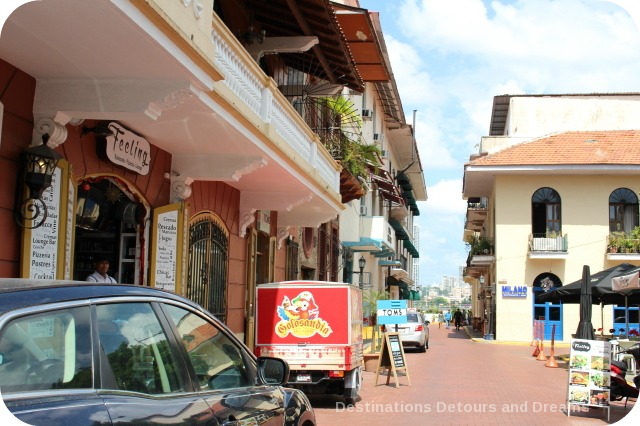
Contrasts are found within the Casco Viejo area itself. Beautifully restored buildings, run-down homes, and buildings under renovation sit side by side. Casco Viejo is home to the Presidential Palace, which is the government office and residence of the President. Yet, just a few blocks away outside Casco Viejo is an area of dilapidated, neglected buildings and visible poverty.
The metropolitan area of Panama City has a population of nearly 1.5 million people. It is multi-cultural and sees many tourists in a year. There are upscale shopping centres and entertainment areas where tourists and locals walk safely at night. And there are areas of crime and gang violence. A Panamanian resident who lives in a more western part of Panama warned me about the city before I came, saying to be careful because it was dangerous.
Our only brush with this side of the city occurred the afternoon we went looking for a post office. I intended to do something rather old-fashioned – mail a couple of postcards. As we walked, the area became seedier and seedier. A woman stopped us at one point and warned us about going further, telling us to hold onto our possessions. She said the area ahead was a “red zone”, an area of crime and violence. We continued on, walking quickly and with purpose, as I held my small cross-body Pacsafe purse tightly against me. We passed a small outdoor market, flanked on each end with police in flak jackets. We made it to and from the post office without incident, but I wouldn’t readily walk through that area again and I certainly would avoid it at night. My husband said he hasn’t seen me walk that fast in years. (When we first asked for stamps for Canada, the clerk shook her head no. I couldn’t believe we’d be unable to post something to Canada so we persisted. She gave me three large stamps for each postcard. It was a challenge to find room for them on the card. Three months later the postcards have still not reached their destination.)
Later that evening, we felt safe and comfortable walking in Bella Vista area. And we found people generally friendly and ready to help, in spite of our almost non-existent Spanish. We had barely started trying to figure out the Spanish options for purchasing a Metro card at the automated machine when three women stopped to help us. They did not appear to be travelling together but joined forces to help these tourists.
A Metro card is used to electronically enter and exit the turnstiles at the subway system. The card cost $2. We then added additional money onto the card to pay for fares. We only needed one card between us. After one of us went through the turnstile, we tapped the card again to allow the other to go through. The Panama City subway system is new, clean, inexpensive, and safe, with security guards on the cars. It opened in 2014 and is being expanded into more than one line.
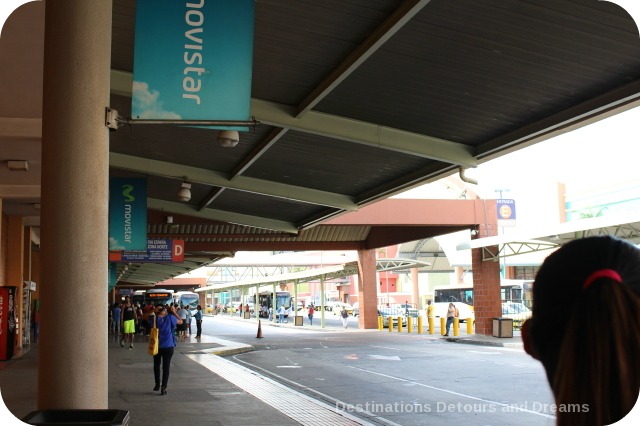
The Metro card can also be used on the modern, air-conditioned Metro buses. But in this city of contrasts, although they are being phased out, we still saw a number of the old Red Devil (Diablo Rojo) buses. These brightly decorated buses, retired U.S. school buses, are independently owned and operated, with no set schedule. They earned their name by the way the drivers honk their horns and fishtail past other traffic.
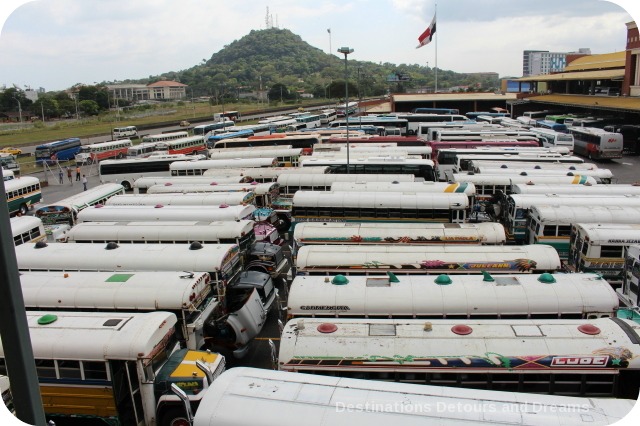
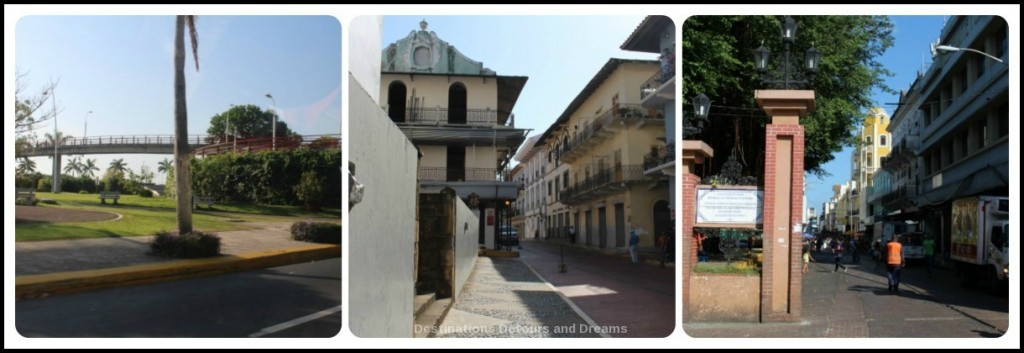
Traffic, whether on landscaped, wide boulevards or on old, hilly, narrow streets, is chaotic, with brazen merging and consistent honking. Taxis were plentiful and inexpensive. They are not metered, but instead operate on a preset fare structure based on zone. Ask the fare before getting in. Available taxis honked at us as they passed by. If we held out an arm as they did that, they stopped and picked us up.
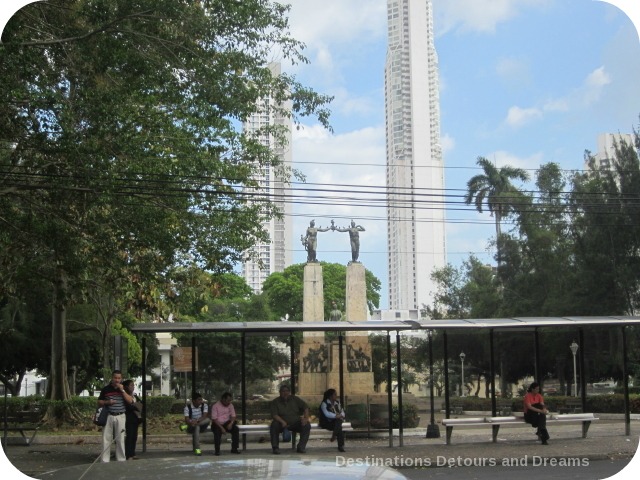
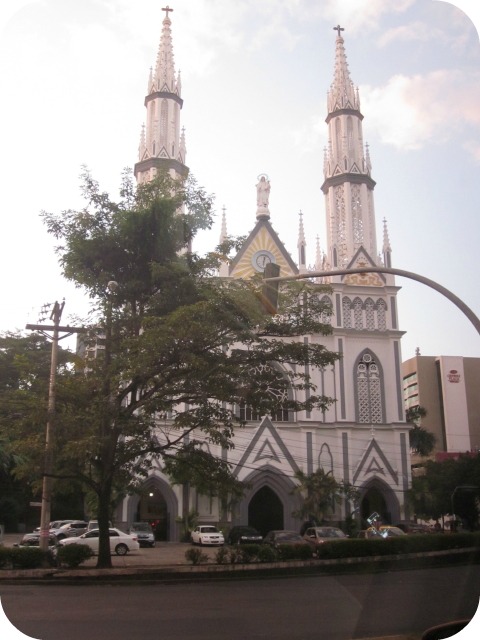
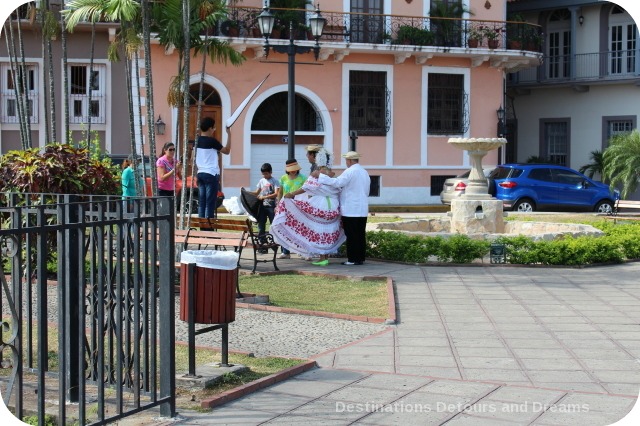
The people we saw in the streets of Panama City could have been in any major city, with western style dress and cell phones in hand. Even in the heat, jeans and long pants were common. Although traditional costume is typically reserved for festivals and special occasions, we spotted glimpses of the traditional among the everyday western dress – older women wearing the type of waistline purse worn with the pollera and women with the many-coloured beaded leg wrappers of the indigenous Kuna traditional costume.
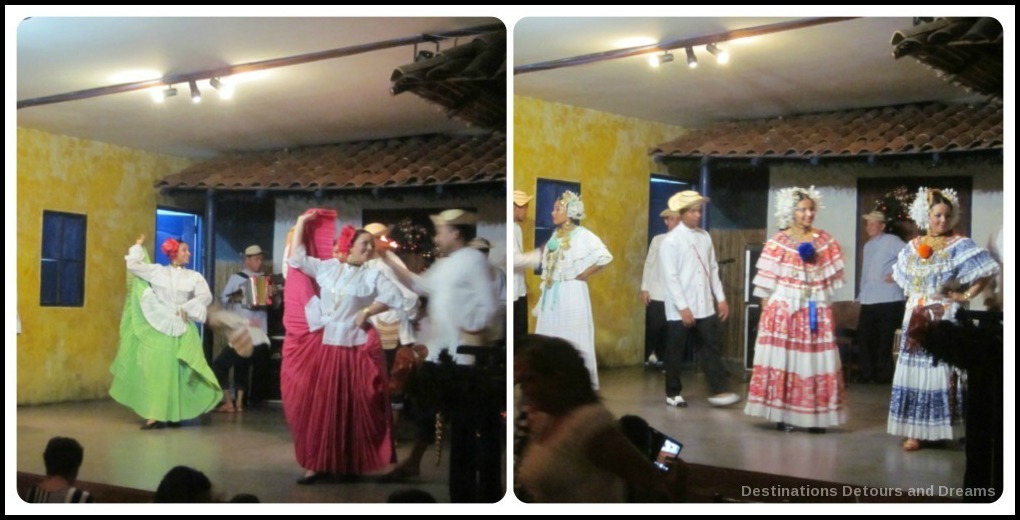
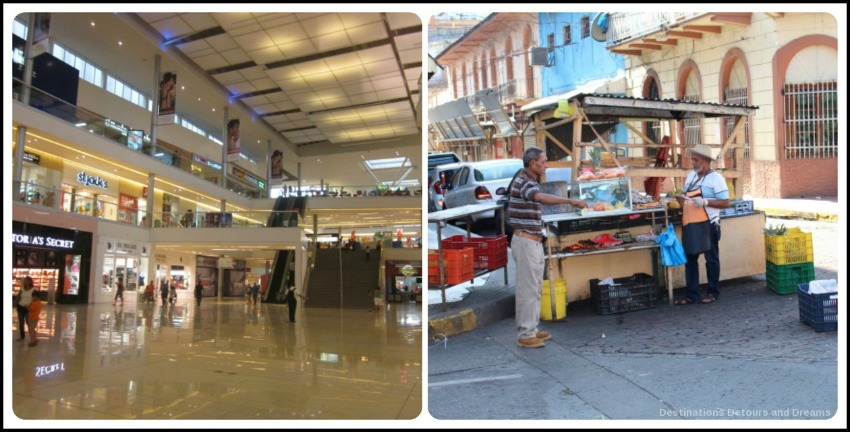
There are many areas of Panama City I did not experience. And there are many sites I did not get a chance to visit, such as the ruins of Panamá Viejo, the protected tropical forest of Parque Natural Metropolitana, and the many museums. I did make it to Miraflores Locks to see part of the Panama Canal, an engineering marvel which has played a major role in the history and making of Panama City. For now, until future visits alter my impressions, Panama City remains a city of contrast for me.
Have you been to Panama City? What were your impressions?
Destinations Detours and Dreams monthly e-newsletter contains behind the scenes information, sneak peeks ahead, travel story recaps and more. SIGN UP HERE

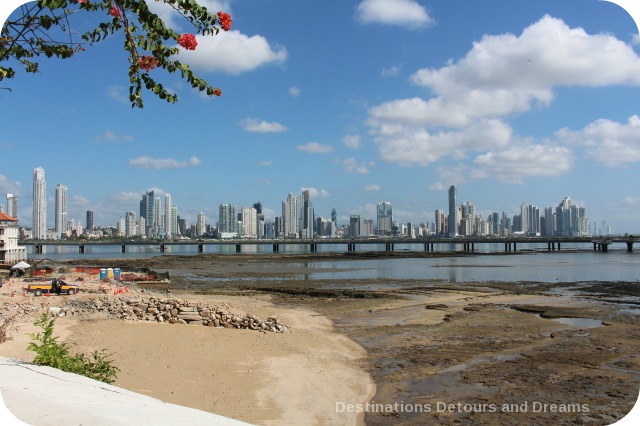
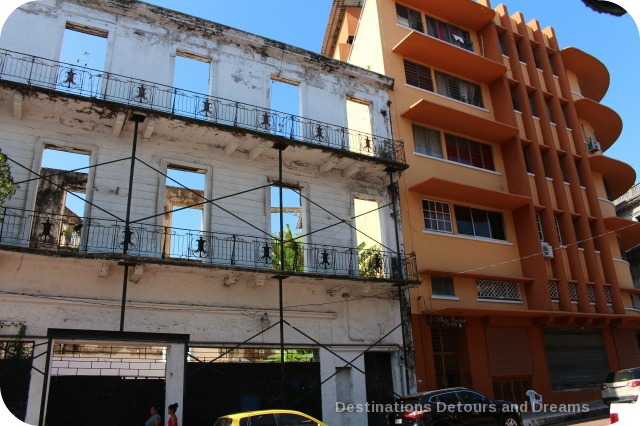
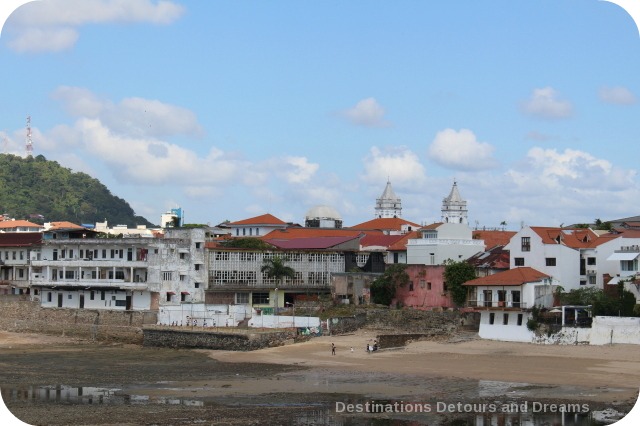
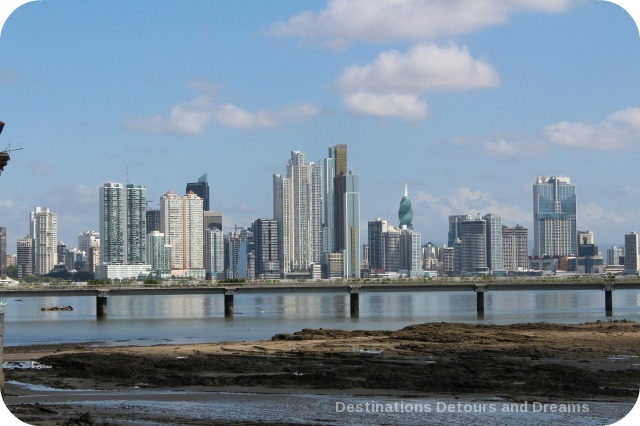
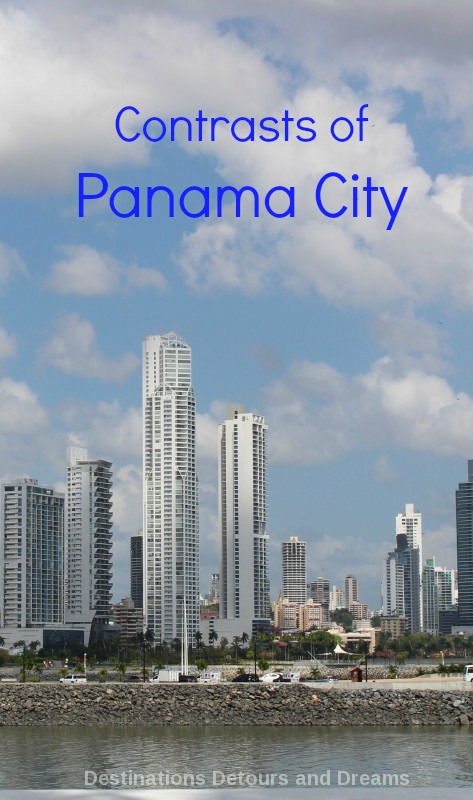
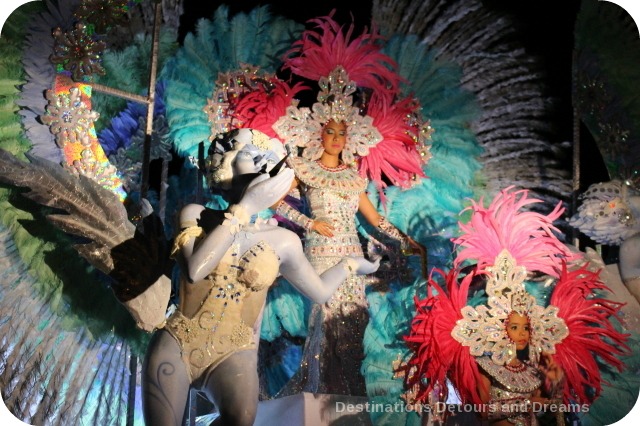
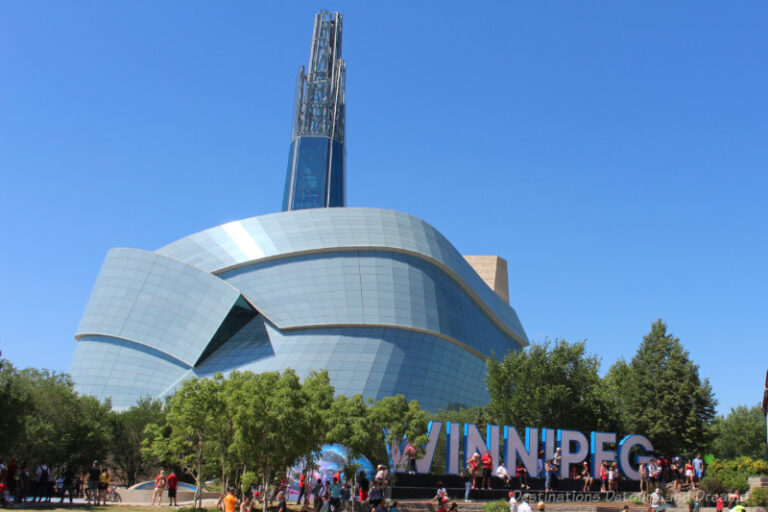
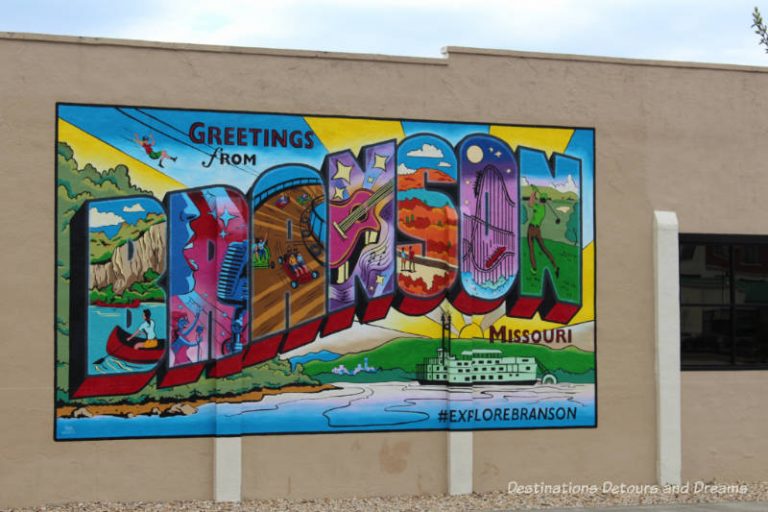
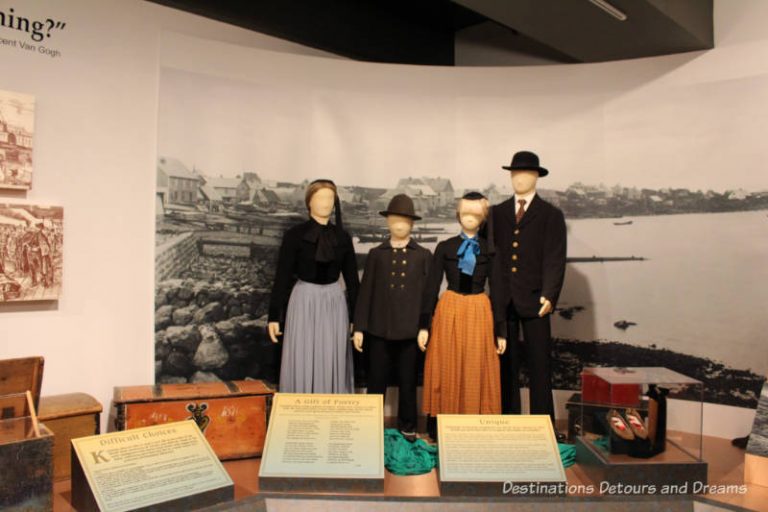
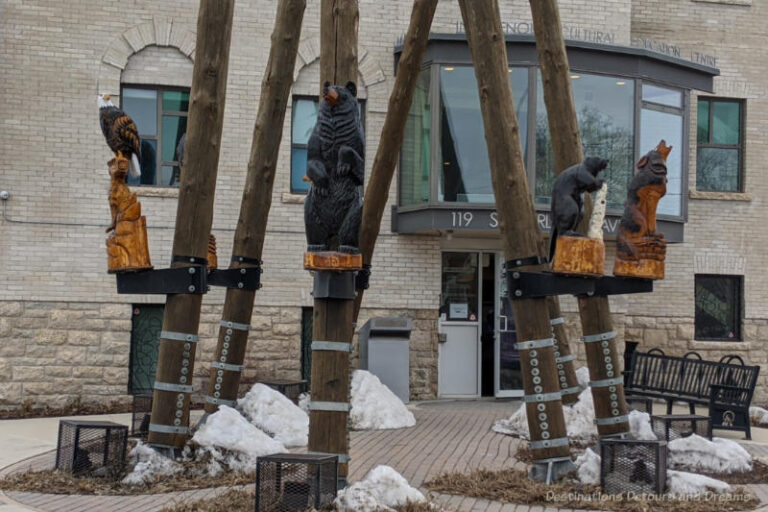
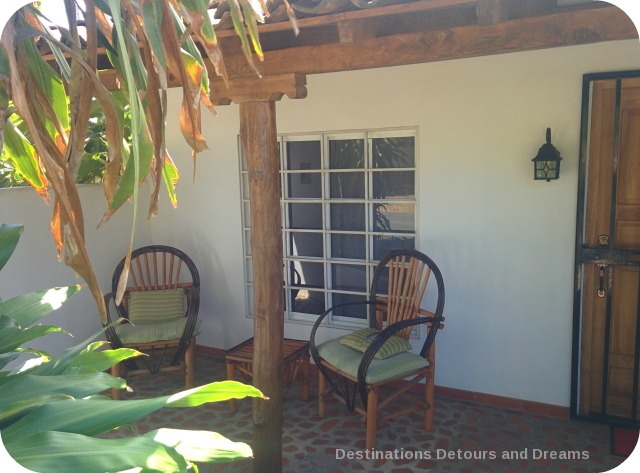
Great summary of your impressions, Donna. I too was struck with the contrasts visiting Panama four or so years ago. At that time those “red devil” busses were supposedly on their way out so interesting to hear they are still careening down the streets. I remember a strong policy/paramilitary presence in Casco Viejo, which was a bit unnerving at first. We roamed around a fair bit, but never felt unsafe. You also reminded me of the contrast between weather and dress. Always wanting to avoid looking too much the tourist, I stuck to jeans and tops while we were in the city despite the sweltering heat. No shorts on those local women (presumably for modesty), yet some of the tightest jeans and t-shirts I’ve ever seen. 🙂
Deb, it’s possible there are fewer “red devil” buses than a few years ago, but there are still some careening through the streets. I can’t imagine how anyone can be comfortable wearing tight jeans in the heat and humidity.
Fantastic summary and the picture really do highlight your theme of contrast. Post office story made me cringe… I think I made have turned tail and ran! But I do hope the cards make it! Interesting that Panama is more in the news these days, though for a completely different story!
Jacquie, I’ve given up on the postcards. And just for the record, I did not open a Panamanian bank account.
We started and ended our several weeks of travel throughout Panama in the city, first by staying with a couple who lived in the American housing near the canal zone that belonged to the government before the handover of the canal. And last in Casco Viejo at the end of our visit. You summed it up well when you talked about the many contrasts evident throughout the city and the tremendous heat and humidity. We also rode the just opened Metro to the end of the line to visit the Bahai temple which is perched above the city with panoramic views. You’ve brought back a lot of great memories, Donna. Anita
Anita, I’m glad this brought back great memories. It would have been nice to visit the Bahai temple and see the views. We didn’t make it there – perhaps another time.
Your walk through the seedier side of Panama had me worried and I give you a lot of credit for your bravery! I think the presence of police alone would make me turn around! I like your approach to explaining the two sides of Panama. It was a surprise to me because I just expected a place that is very rural.
Janice, I’m not sure I would have felt as uneasy if I hadn’t had a few people scare me ahead of time. There are many rural areas in Panama and there are other more urban areas. Panama City is a big, modern city.
Very interesting look at Panama City. Your first photo reminded me, oddly, of Johor Bahru, a city which is similarly situated with pockets of old among the new. Stuff we sent from the post office there, though, actually made it back to the States. 😉
Betsy, I’m not familiar with Johor Bahru, but it is interesting that Panama City reminded you of it. I’ve sent postcards before that never made it – maybe I’m jinxed.
I love the thought that there are rural areas in Panama, and it was interesting reading about your visit because I know very little about the city. I loved the final image of the skyline, which in many respects reminded me a little of our beautiful Perth city skyline.
Johanna, it’s interesting that the skyline reminded you of Perth. I’ve never made it to Perth – maybe one day.
I’d never really given Panama City much thought until reading your post, and what an interesting place it appears to be! May have to add another one on my ever-increasing bucket list! Great introduction, Donna.
Panama wasn’t on my radar either until recently. Panama City was interesting and it was also great to get out of the city into rural areas of the country.
This looks like a fascinating city to explore old and new, I’m glad the old sections have been kept intact instead of a mish mash of different styles. I would love to visit some day.
Noel, Panama City certainly was a mix of old and new. My understanding is that the Casco Viejo area was quite rundown until the UNESCO designation, which prompted a lot of restoration work.
I live part time in Panama and am always excited to see people’s first reactions. Isn’t it amazing how different the contrast between the historic old buildings, housing projects and slums, and cosmopolitan world-class city? Loved your post! 😉 Casco Viejo is my favorite part of the country. We live in Boquete.
Melody, I too find it interesting to see people’s reactions to places I live. We also spent one month in Pedasi on the Azuero Penisula which was quite a different experience than Panama City. I enjoyed that. Maybe next time I get to Panama I’ll get a chance to see Boquete. From what I’ve read that will be quite different again.
As usual, great shots and account. My impression? Metro Manila is just like Panama in its contrasts, only 10 times more (population is 15 million!). Although we do not have a Canal of global significance!
Thanks Carol. It would be interesting to see the contrasts of Manila.
Hi Donna, I’m shocked after the woman warned you of going further due to crime and violence you proceeded on just to mail postcards! Hope they eventually arrive or it was all for nothing. Glad you made it out okay and can travel on to tell us of more of your adventures. 🙂
Susan, we almost didn’t proceed but we knew we didn’t have far to go and we hurried.
I love seeing the kind of contrast you describe so well in Panama City; or rather, I enjoy the visual old and new contrasts, not the wealth contrasts. I’m in Dubai right now and if you visit the old restored original quarter of the city, the tall buildings line the horizon in some directions, including the Burj Kalifa, the tallest building in the world. I love that!
Rachel, I too like the contrasts between the old and new but not the rich and poor. The picture you paint of Dubai sounds interesting.
I see nothing wrong with using the word contrast here–as soon as you see the pictures it becomes evident how many contrasts there are. I enjoyed the narrative and the pictures. I love when the locals are so helpful–it adds to the small world syndrome I love.
Rose Mary, we found the Panamanians very helpful, both in the city and in the rural area.